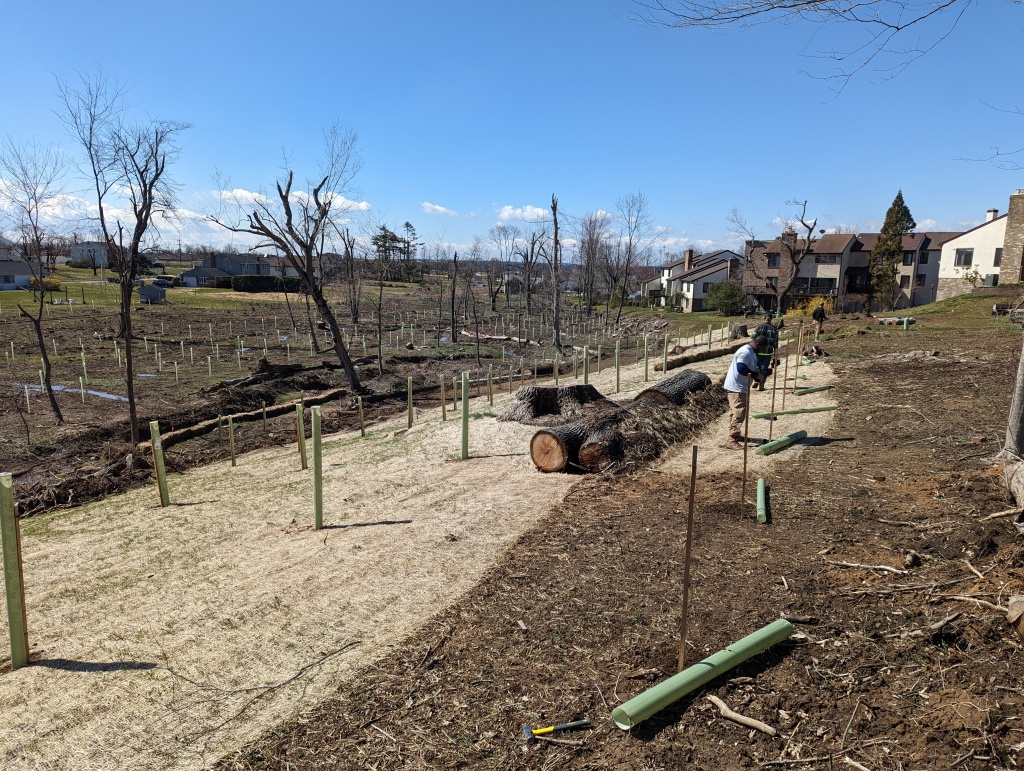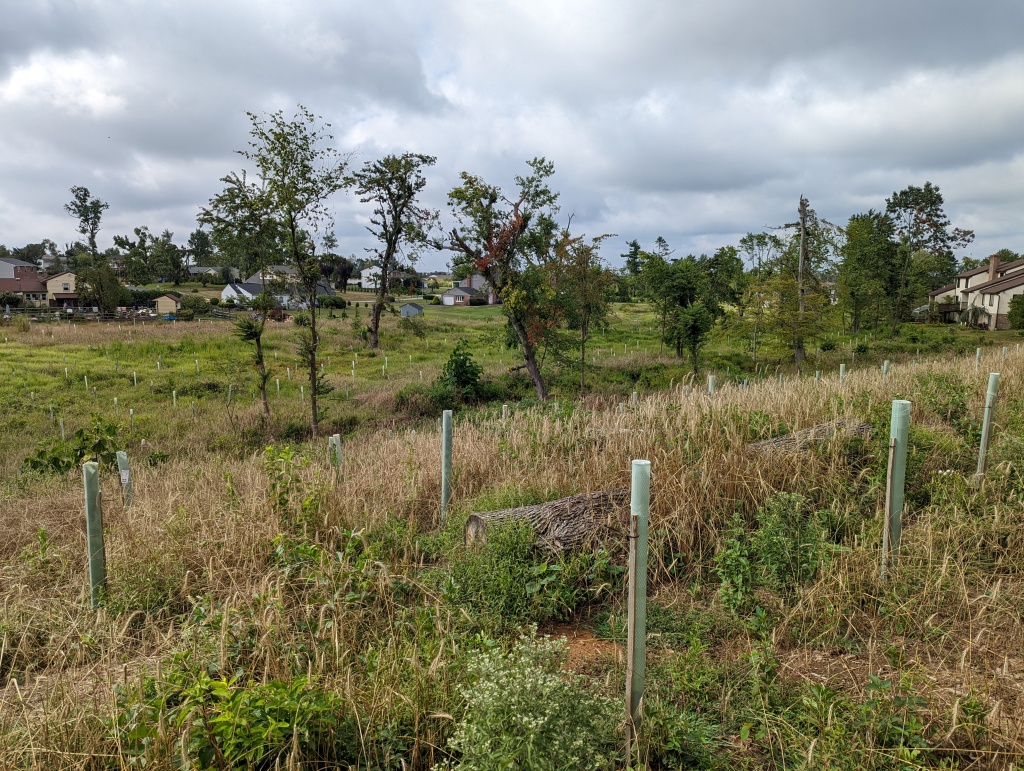The other "new normal"- natural disasters
Recovery in natural lands
In September 2021, Upper Dublin Township was hit by an EF-2 tornado which ripped through several parks, devastating natural areas. I was responsible for overseeing debris removal and restoration in these natural areas. With strong storms predicted to increase, we can't assume they won't affect us. Nothing can make the recovery process easy, but here are a few tips I’ve learned from our experience.

Keep a log of culverts, trails, and other infrastructure in the natural areas of your parks. Take photos and keep records of any upkeep, for example, cleaning debris out of culverts or removing hazardous trees.
Clearly mark your property boundaries. Under our emergency debris management contract, contractors could only work on public property. We had many of our park boundaries clearly marked in advance. This made it easier for crews to work efficiently, without constant guidance on property lines, and to keep heavy equipment off of neighbors’ properties, especially when it was difficult to see through thick debris. You may not have access to maps or computers after a storm, so familiarize yourself and other staff with property lines before a storm hits.
Take photographs. Always remember to photograph damaged amenities, including hazardous trees, before beginning cleanup.
Determine your course of action for restoration. Will you replant an area, clear debris but let it regrow naturally, or leave it as-is? Here are a few things to consider:
● Is the park heavily trafficked? Will amenities or previous investments be undermined by doing nothing? These parks may be priorities for restoration.
● Successful plantings require regular mowing, maintenance, and invasive species control for several years. If your organization doesn’t have the capacity to absorb this additional work, replanting may be a wasted investment.
● How many trees survived? In forests that kept the majority of their tree canopy, we opted to let them repopulate the area on their own. Forests that lost most of their trees needed a jumpstart through planting.
● How many invasive plants were present? In forests that have dense invasive species populations, native species may struggle to regenerate.
Plan erosion control measures with long-term maintenance in mind. Erosion control measures may be needed, and some of these can be integrated with long-term site plans to reduce future headaches. For example, we seeded one park with winter rye for erosion control, which is less persistent and weedy than the more commonly used annual rye, to avoid excessive competition as we re-establish native trees.

Retain some trees- even if they aren’t pretty. We planned to retain as many trees as possible. Though they won’t fully recover, they provide wildlife habitat, continued shade, root sprouts and seeds to speed regeneration, and large root systems to stabilize soil.
We stuck to a few guidelines when choosing which trees to retain:
● Don’t retain trees that could hit private property, trails, or other targets if they fail.
● Retain as many trees as possible along streams.
● Shoot for 3-6 snags per acre for wildlife, with particular attention to den trees (trees with cavities).
Research prior to planting. If you are planning to replant, check out sources on successful large-scale planting, such as Stroud Water Resource Center (which focuses on streamside plantings, but many of the same practices apply on uplands).
Don’t give up on your parks. I was amazed at how quickly nature began to recover, and our parks began flourishing again. Don't write them off too soon.




